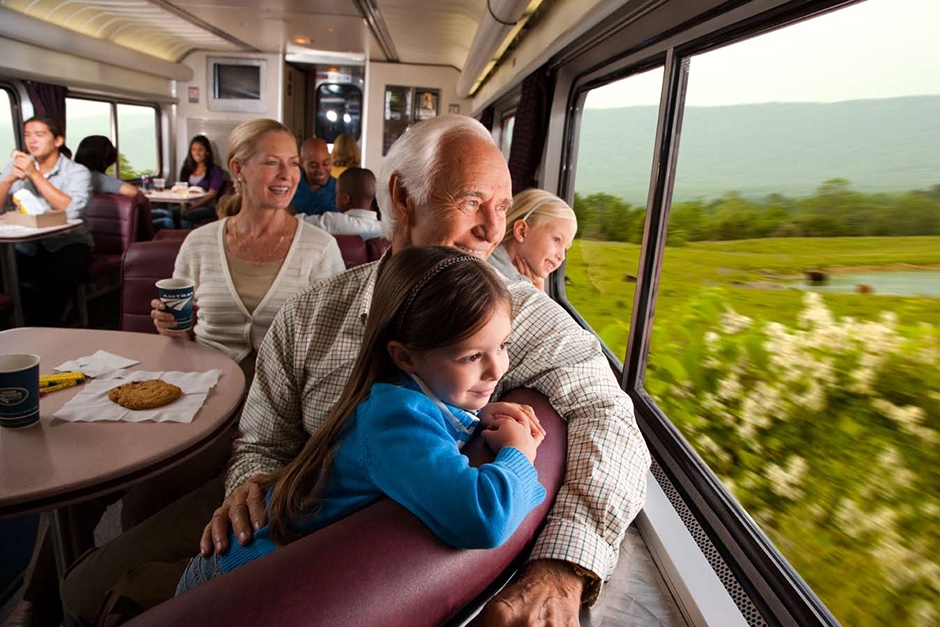Trips for senior adults represent a significant segment of the travel industry, offering unique opportunities for exploration, relaxation, and connection. This guide delves into the planning and execution of unforgettable journeys tailored to the specific needs and preferences of older travelers. We’ll explore various trip types, from relaxing cruises to adventurous excursions, emphasizing safety, accessibility, and budget-conscious options. Understanding the importance of health considerations, accessible accommodations, and efficient packing strategies is key to ensuring a smooth and enjoyable experience for senior adventurers.
From choosing the right destination and transportation to managing health concerns and budgeting effectively, we provide comprehensive advice to empower senior adults to embark on their dream vacations with confidence and peace of mind. We’ll cover everything from selecting suitable activities to navigating financial aspects and ensuring a safe and enriching travel experience.
Types of Trips for Senior Adults
Choosing the right travel experience is crucial for senior adults, ensuring both enjoyment and comfort. Factors such as physical capabilities, interests, and budget significantly influence the ideal trip type. A well-planned trip can offer enriching experiences and create lasting memories.
Five Popular Trip Types for Senior Adults
Senior travelers have a diverse range of options to choose from, catering to various preferences and activity levels. The following five types represent popular choices, highlighting their unique appeal.
- Relaxation and Wellness Retreats: These trips focus on rejuvenation and stress reduction. They often feature spa treatments, yoga classes, healthy cuisine, and opportunities for quiet reflection. The appeal lies in the emphasis on rest and self-care, making them ideal for seniors seeking to unwind and recharge.
- Cultural and Historical Tours: These trips immerse travelers in the history, art, and culture of a particular region or country. They often include guided tours of museums, historical sites, and cultural events. The appeal lies in intellectual stimulation and the opportunity to learn about new cultures and places.
- Cruises: Cruises offer a convenient and all-inclusive travel experience. Many cruise lines cater specifically to older adults, offering accessible amenities and onboard activities. The appeal is the ease of travel, with all meals, entertainment, and transportation included.
- National Park Tours: These trips focus on exploring the natural beauty of national parks, offering opportunities for hiking, wildlife viewing, and scenic drives. While some level of physical activity is involved, many tours offer options for varying fitness levels, making them suitable for many seniors.
- Small Group Tours: These tours offer a more intimate travel experience with a smaller group of travelers, often with a focus on a specific interest or destination. The appeal is the personalized attention and the opportunity to connect with fellow travelers who share similar interests.
Cruises versus Escorted Tours: A Comparison
Both cruises and escorted tours are popular choices for senior travelers, but they offer distinct advantages and disadvantages.
Cruises: Advantages include all-inclusive pricing, convenience, and a variety of onboard activities. Disadvantages may include potential for seasickness, limited shore excursions, and large crowds.
Escorted Tours: Advantages include detailed itineraries, expert guidance, and opportunities for cultural immersion. Disadvantages can include a more structured schedule, potentially higher costs, and less flexibility.
The best choice depends on individual preferences and priorities. Seniors seeking a relaxing and convenient vacation might prefer a cruise, while those who value cultural immersion and personalized attention might opt for an escorted tour.
Adventure Travel for Senior Adults: Safety and Accessibility
Adventure travel can be adapted to suit the needs and capabilities of older adults, prioritizing safety and accessibility. This often involves choosing less strenuous activities, opting for well-maintained trails, and selecting accommodations with appropriate amenities.
Examples of accessible adventure travel include gentle hiking in national parks, kayaking on calm waters, or wildlife viewing tours with accessible transportation. Safety measures might include traveling with a group, carrying appropriate medical supplies, and having a well-defined itinerary.
Cost, Accessibility, and Activities of Three Senior Travel Options
The following table compares three different senior travel options: a relaxation retreat, a cultural tour, and a cruise.
| Travel Option | Cost (Approximate) | Accessibility | Activities Offered |
|---|---|---|---|
| Relaxation Retreat | $2,000 – $5,000 per person | Generally high, with options for varying levels of mobility | Spa treatments, yoga, meditation, healthy cuisine, nature walks |
| Cultural Tour (10 days) | $3,000 – $8,000 per person | Moderate; may involve some walking and stairs | Guided museum tours, historical site visits, cultural performances, local cuisine experiences |
| 7-Day Cruise (Caribbean) | $1,500 – $4,000 per person | Generally high, with accessible cabins and facilities | Onboard entertainment, swimming, dining, shore excursions (varying levels of activity) |
Activities and Entertainment
Planning engaging activities and entertainment is crucial for a memorable senior travel experience. A well-rounded itinerary should cater to diverse interests and physical capabilities, ensuring everyone enjoys the trip to the fullest. Balancing relaxation with exploration is key to preventing fatigue and maximizing enjoyment.
Suitable Activities for Senior Adults
A variety of activities can be incorporated into a senior travel itinerary, depending on the group’s preferences and physical capabilities. Gentle walks through scenic parks or along picturesque coastlines offer opportunities for light exercise and breathtaking views. For those who prefer a slower pace, guided tours of historical sites, museums, or art galleries provide enriching cultural experiences. Alternatively, engaging in leisurely activities such as birdwatching, gardening workshops, or wine tasting can create memorable moments. For the more adventurous, gentle cycling tours or boat trips can offer a unique perspective and exciting experiences. Crucially, flexibility is key – allowing ample time for rest and relaxation between activities.
Creating a Balanced Travel Itinerary
A successful senior travel itinerary balances relaxation and exploration. This involves incorporating both active and passive activities throughout the trip. For instance, a morning might involve a guided tour of a local market, followed by an afternoon of leisurely relaxation by a pool or spa. Evenings could feature cultural performances or simply enjoying a delicious meal at a local restaurant. The key is to avoid over-scheduling, allowing ample time for rest and spontaneous moments. Consider incorporating downtime for naps or simply enjoying the hotel’s amenities. This approach prevents fatigue and enhances the overall enjoyment of the trip.
Low-Impact Activities for Limited Mobility
For senior travelers with limited mobility, choosing appropriate activities is essential. Gentle chair yoga or seated stretching exercises can be incorporated into the daily routine to promote flexibility and well-being. Visiting botanical gardens, art museums, or historical sites allows for exploration at a relaxed pace. Many museums and historical sites offer wheelchair access and assistive devices. Furthermore, enjoying scenic drives or boat tours provides a fulfilling experience without requiring extensive physical exertion. Remember to check accessibility features beforehand and plan for adequate rest periods.
Entertainment Options for Senior Travelers
A diverse range of entertainment options can enhance the senior travel experience. Attending local cultural events, such as concerts, theatrical performances, or folk dance shows, provides an immersive cultural experience. Visiting museums and historical sites offers opportunities for learning and exploration. Participating in cooking classes, wine tasting sessions, or craft workshops provides interactive and engaging experiences. Enjoying scenic drives, relaxing by the beach, or exploring local markets caters to different preferences and energy levels. Consider also the availability of comfortable seating and accessible facilities when selecting entertainment options.
Conclusion
Planning a trip for senior adults requires careful consideration of various factors, but the rewards are immeasurable. By prioritizing accessibility, health, and budget, you can create a journey that is both enjoyable and enriching. Remember that the ultimate goal is to craft an experience that fosters independence, promotes well-being, and creates lasting memories. With thoughtful planning and preparation, senior adults can embrace the adventure of travel and explore the world with confidence and joy. This guide serves as a starting point, empowering seniors to personalize their travel plans and embark on fulfilling journeys.




